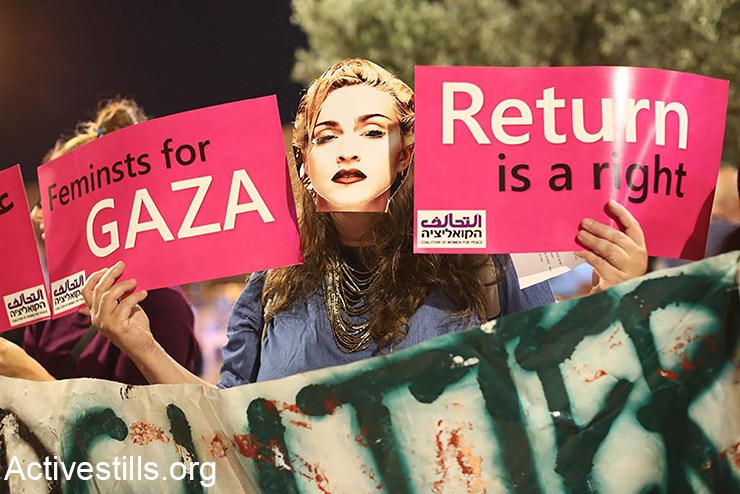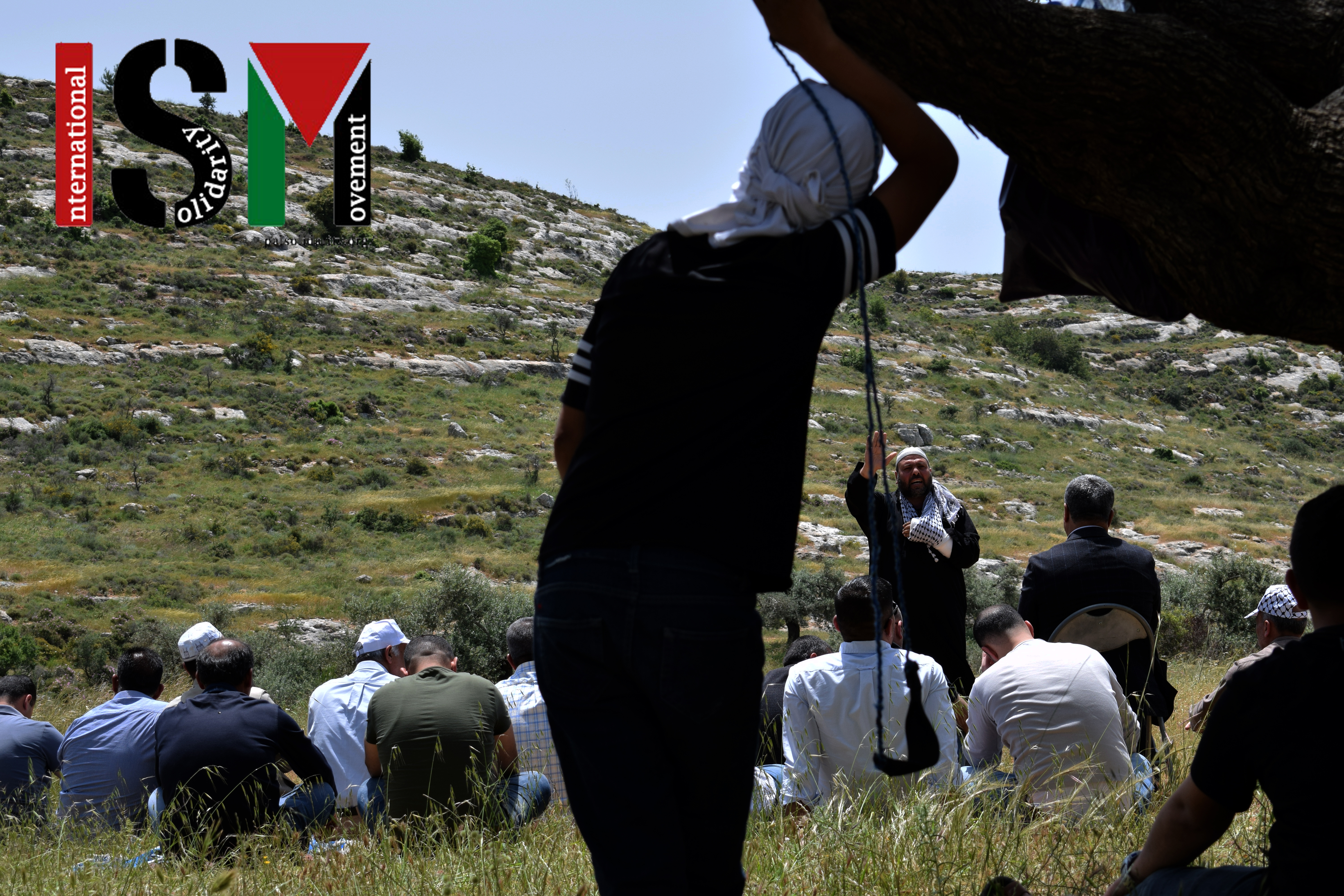Category: Reports
-
Protesters break through replica of Apartheid Wall in Bethlehem symbolic run
Protesters gather for symbolic marathon near Apartheid Wall in Bethlehem June 19 2019 | International Solidarity Movement | Bethlehem, occupied Palestine Hundreds of people gathered in cities across the Palestinian Territories and England on Sunday June 15, to participate in a symbolic marathon in honour of the international right to freedom of movement. The project, called…
-

ISM Week of Action Against Eurovision
May 2019 | International Solidarity Movement| occupied Palestine ISM’s week of action against the Eurovision in Tel Aviv In coordination with the Palestinian Boycott National Committee (BNC) and The Palestinian campaign for the Academic and Cultural Boycott of Israel (PACBI) and in collaboration with Israeli anti zionist groups has been a huge success! From before…
-

3 minutes after people finish praying at the al-Risan hill, the Israeli army fire tear gas; Protestors never give up
April 26, 2019 | International Solidarity Movement | Mount al-Risan, occupied Palestine This Friday a large group of worshippers gathered for prayers at Mount al-Risan. When they arrived, two groups of Israeli military were already on each side of the valley waiting for them. The worshippers prayed together in front of the hill, as always…
